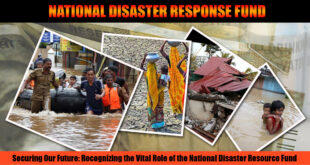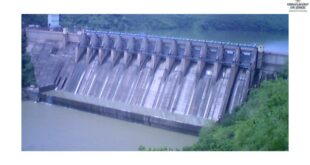- India is experiencing a colder than normal winter thanks to the north-south winter flow set up by the climate phenomenon known as La Niña.
- The La Niña itself is going on for a record-breaking third consecutive year. Now, forecasts for the 2023 fall and winter are predicting that there is a 50% possibility for its companion phenomenon, the El Niño to occur.
What are El Niño and La Niña?
- El Niño refers to a band of warm water spreading from west to east in the equatorial Pacific Ocean.
- The years in which an El Niño occur are called ‘El Niño years’, and global weather patterns in that year tend to be anomalous in certain ways. Similarly, a La Niña occurs when the band of water spreads east-west and is cooler. Both phenomena can have drastic effects on economies that depend on rainfall.
- The first thing to note is that El Niño forecasts before spring tend to be notoriously unreliable because the climate system is quite noisy in spring — the Sun transitions across the equator, from one hemisphere to the other, creating noise in predictions.
- However, in a La Niña year, the tropical Pacific Ocean soaks up heat and accumulates warm water.
- During the El Niño, this warm water spills from the western part of the Pacific Ocean to the eastern part. Earth has had three straight La Niña years, which means the Pacific’s warm-water volume is fully loaded and likely to birth an El Niño soon. An El Niño year creates a miniature global-warming crisis, since the warm water spreading across the tropical Pacific releases a large amount of heat into the atmosphere.
What will happen to cyclone formation and monsoons?
- A transition from a La Niña winter to an El Niño summer historically tends to produce a large monsoon deficit, on the order of 15%.
- This means pre-monsoon and monsoon circulations tend to be weaker in an El Niño year. The vertical shear (change in the intensity of winds from the surface to the upper atmosphere) tends to be weaker as well.
- This in turn can favour enhanced cyclone formation. But, of course, the global climate system is not so simple. Intraseasonal or subseasonal timescale variability in sea-surface temperature and winds is also very important for cyclogenesis over the northern Indian Ocean.
- These timescales denote the durations for which certain temperature and wind characteristics persist in the pre- and post-monsoon periods. That said, the net effect is for cyclogenesis to be subdued in an El Niño year.
- As for monsoons — if an El Niño state does emerge by summer — we will likely have a deficit in 2023.
- Some research has indicated that the Indian Ocean dipole — a seesawing of sea-surface temperature over the tropical Indian Ocean — could compensate for the negative effects of an El Niño.
- But we don’t yet know whether there is a robust relation between the dipole and the summer monsoon, nor whether the dipole will evolve the ‘right’ way this year.
- Additonally, there are the monsoon’s vagaries themselves. For example, pre-monsoon cyclones are susceptible to warming in the Arctic region, and could in turn affect the onset of the summer monsoon.
- For another, the Bay of Bengal has of late been receiving freshwater from heavy rains and anomalously high river-runoffs.
- These waters tend to sneak into the Arabian Sea, produce surface warming, and build up subsurface heat.
- These changes together may create favourable conditions for the formation of bigger and badder cyclones, especially if the circulation and the vertical shear are weak.
- All things considered, India will have to wait for the El Niño forecast to be updated in the coming weeks.
SOURCE: THE HINDU, THE ECONOMIC TIMES, PIB
 Chinmaya IAS Academy – Current Affairs Chinmaya IAS Academy – Current Affairs
Chinmaya IAS Academy – Current Affairs Chinmaya IAS Academy – Current Affairs



